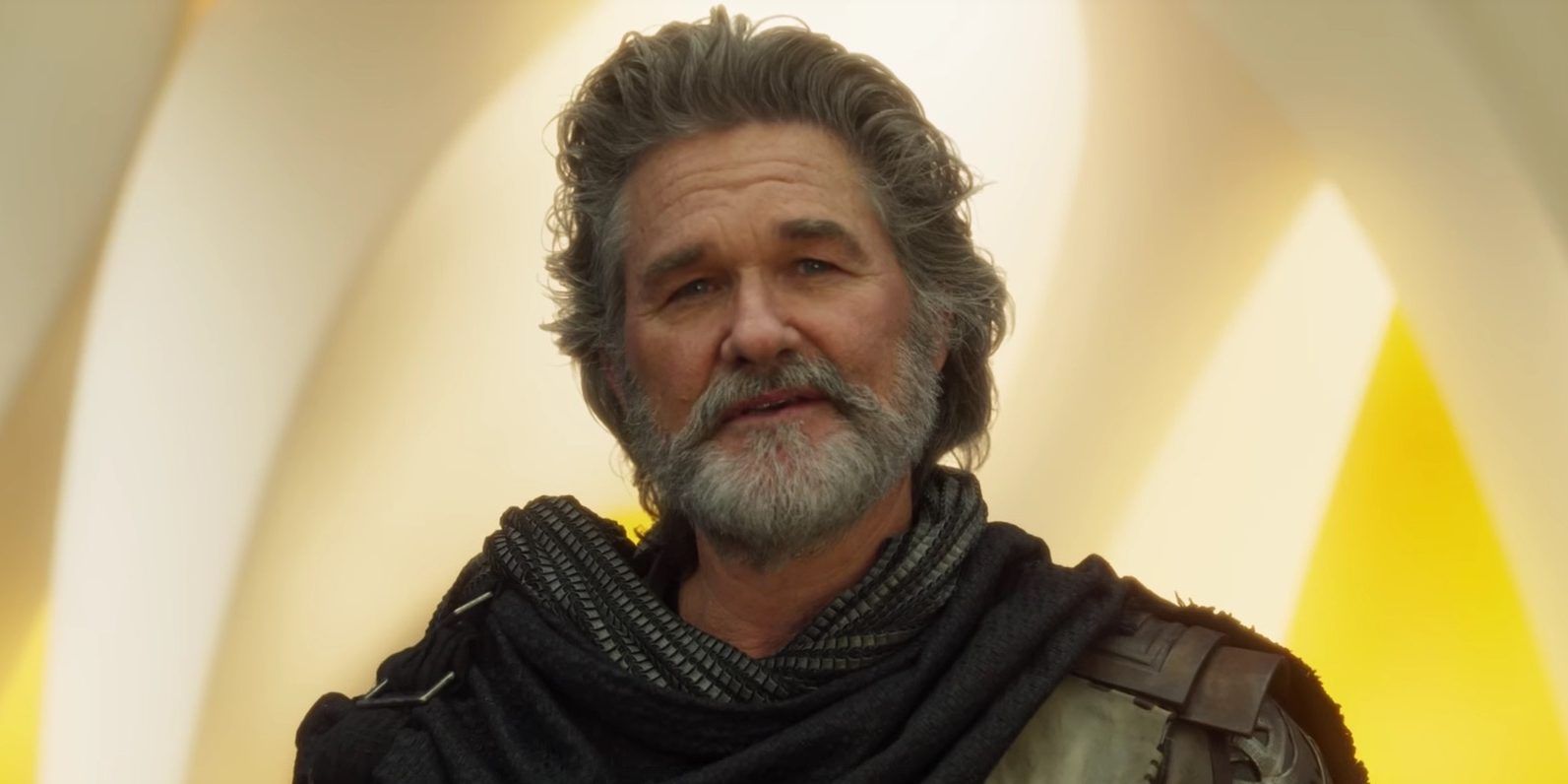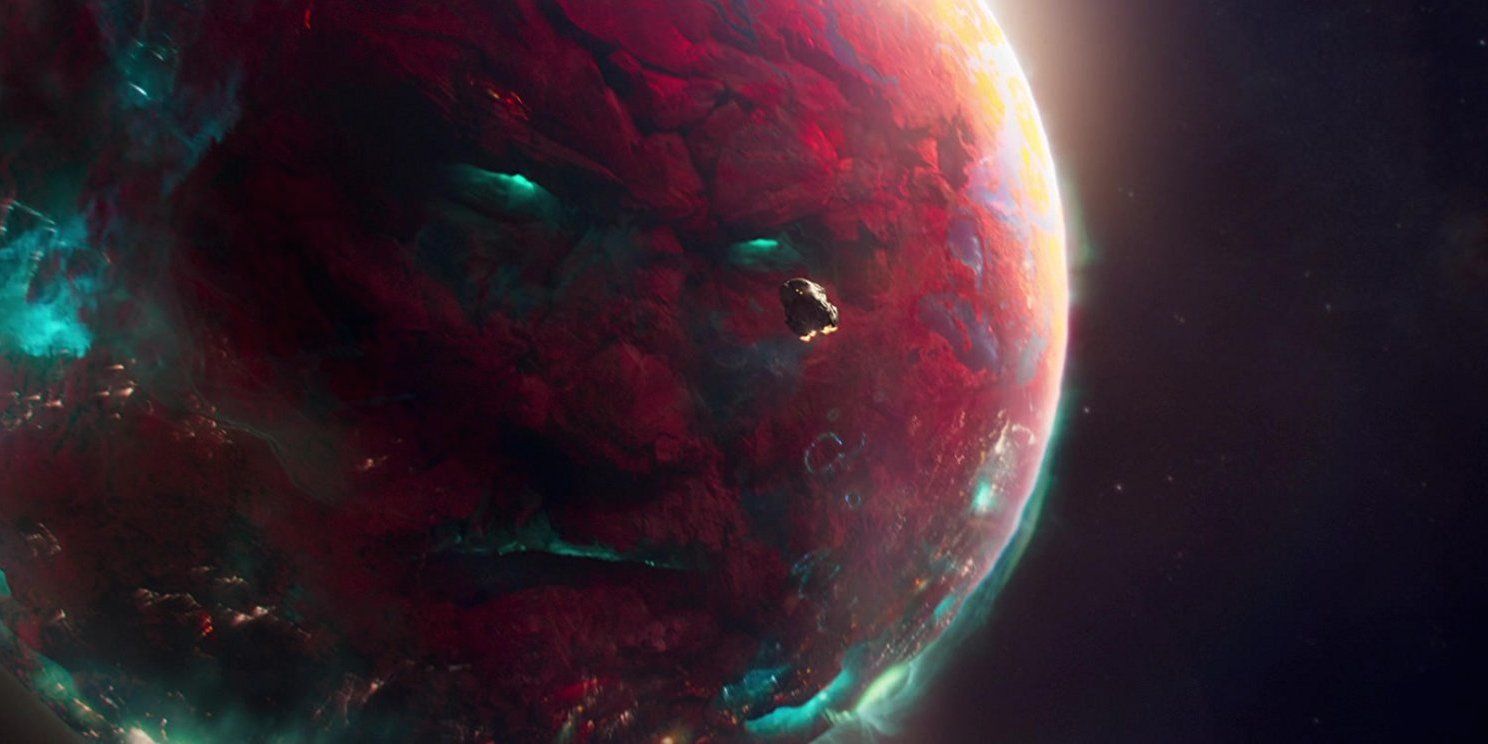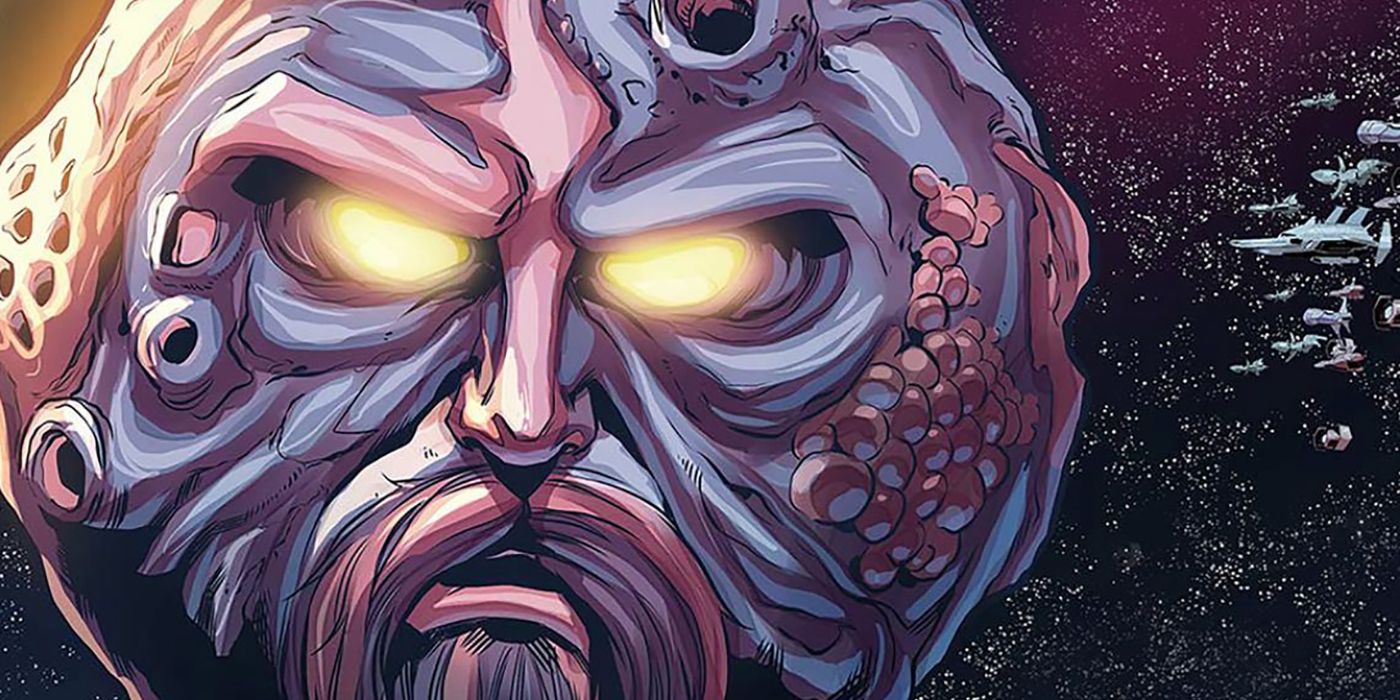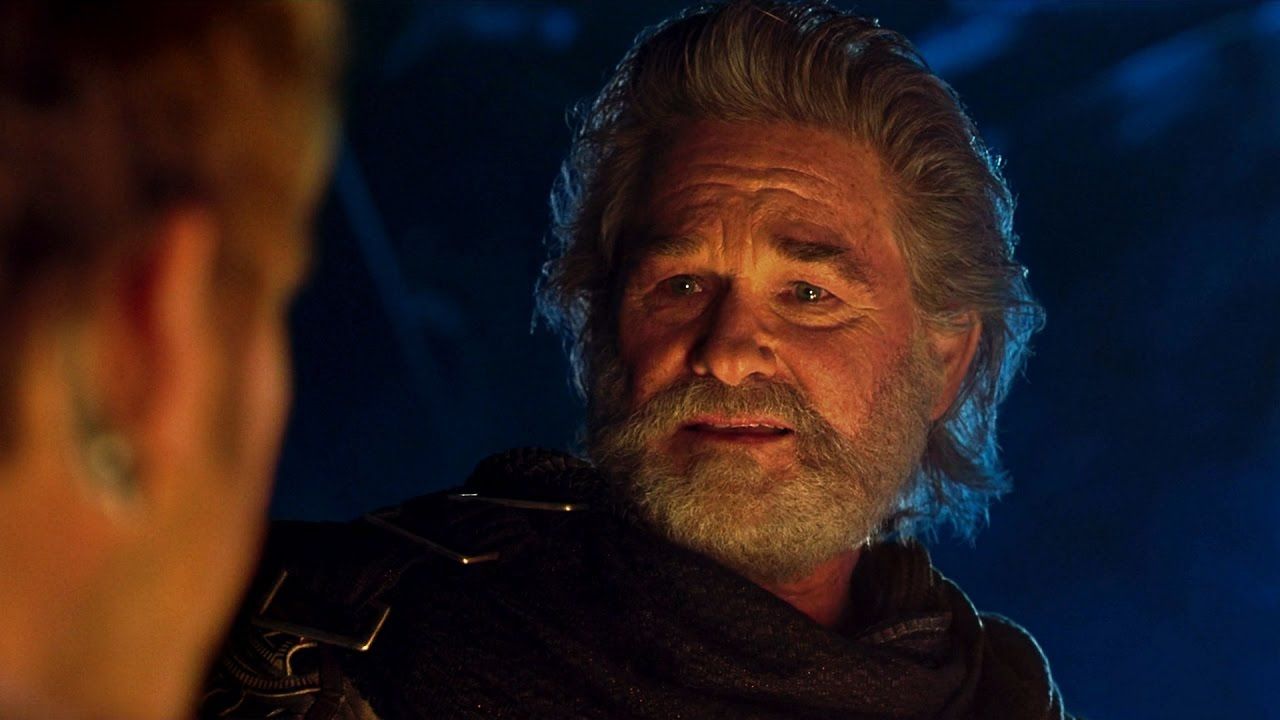The Marvel Cinematic Universe has a long history of radically altering its characters' comic history to better fit the big screen stories being told, but there may be no character who went through bigger changes than Ego the Living Planet. While there are similarities between the villain of Guardians of the Galaxy Vol. 2 and the character from the comic, there's still a world of difference between them.
What's the Same?
First introduced in Thor #132 in 1966, there was a lot of history behind Ego to pack into his 2017 film debut. The broad strokes of the character certainly remained the same from comic to screen. Ego is an immensely powerful antagonistic force that poses a gargantuan threat to the heroes of Marvel. Although the MCU Ego spent most of Guardians 2 in his humanoid form portrayed by actor Kurt Russel, his final form in the film's climax bears a striking similarity to his comic counterpart.
The Ego of the comics is known as the Living Planet and often takes the shape of a giant face on the side of a planet. The MCU version mirrors that same look in the final fight against the Guardians, showing that the character's appearance did not get totally lost in translation. The MCU version even had a cerebral core like he does in the comics. However, the similarities between the two end at this surface level.
What Changed?
The biggest difference between the comic and MCU versions of the character is their origin. In Guardians 2, Ego was an ancient Celestial whose powers of matter-manipulation allowed him to form an idyllic planet around him. In the comics, Ego was a planet and commonly remained in that form.
While there are hints that comic Ego originated when a scientist's mind fused with a planet, the character most commonly serves as a giant space-faring threat to Marvel's heroes. Paradoxically, the MCU managed to make the character both bigger and smaller. MCU Ego's adventures on Earth and in humanoid form would all be too petty for comic Ego, whereas MCU Ego's larger goal to encompass the entirety of the universe would be too grand.
The MCU also made a major change by making Peter Quill Ego's son. In the comics Ego does not have a son, so the twist was original to the MCU.
What Next?
Now, both versions of the character may prove to be a bigger deal than they ever have before. In the comics, Ego already shared power with Knull and Galactus, making him a significantly larger threat, and possibly moving him beyond the universal scope of the MCU and into the multiversal scope neither version of the character has previously approached.
While the MCU Ego may seem to be dead and gone and, thus, no longer a threat, audiences should not feel so sure. Celestials are incredibly hard to kill, and if there is any connection to the Elders of the Universe, like the Grandmaster and the Collector, who are still plotting within the MCU, then Ego's return may be imminent. Like the comics, Avengers: Endgame revealed the existence of a multiverse that future Marvel properties promise to explore. The way things are going, Ego could end up being a bigger threat than ever on the page as well as the screen.




